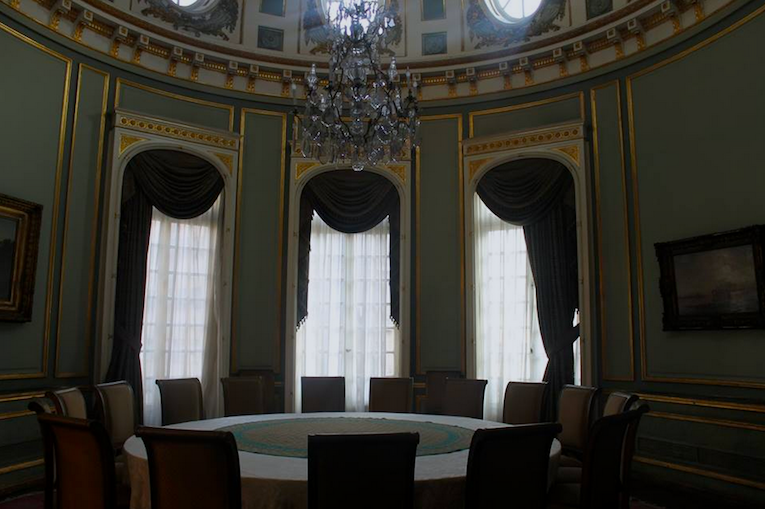In sharp contrast to the greys and browns that dominate downtown Cairo, at the corner of Talat Harb and Abd El Salam Aref, stands the luminously white building of the Egyptian Diplomatic Club. Previously known as the Mohamed Ali Club, this building has always been an exclusive destination for the elites of Cairo. Today, it is a venue for social gatherings, conferences, and meetings for the diplomatic community.
The Mohamed Ali club was built in 1908 under the supervision of Prince Ahmed Fouad Pasha, who later became King Fouad I. The elegant structure was designed by renowned French architect Alexandre Marcel, who is also credited for the design of the magnificent Baron Palace in Heliopolis. Upon its completion in 1908, the club had only two floors including the basement. However, due to expansion of membership, French architect Michel Roux-Spitz added a third floor and cupola in 1930.
The Mohamed Ali club was built for the royal, rich and elite, as an alternative to the essentially British and pretentious Khedival Club, now known as Gezira Sporting Club. British occupiers are said to have looked down on Egyptian goers, who were even excluded from membership when the club first opened. The Mohamed Ali Club, on the other hand, was indiscriminately elitist. The only requirements for membership were fame, fortune and high social standing.
Except for maintenance renovations, the club has barely changed since the 1930s. The inside of the building oozes with the refined luxury and glamour of the time during which it was built. The grand staircase, the dangling chandeliers and the Aubusson saloons testify for the opulence the pre-1952 aristocracy enjoyed.
On the ground floor, two large paintings tell the story of the club: the first, is of King Fouad I, founder and first honorary president of the club board and the second, is of Mohamed Ali, founder of the last royal family, after whom the club was named. The two paintings are hung in the entrance saloon which leads directly to the Bridge hall.The many rooms on the second and third floors consist of dining halls, French styled saloons, private rooms for the king, a library and a bar. Filling the walls of the rooms, are exquisite antique paintings that have not been moved since the day they were first introduced to the club. Many of the paintings were gifts from Mohammed Mahmoud Khalil Bey, a famous art specialist and collector at the time. The paintings are works of renowned French artists such as Louis Amable Crapelet, Jean-Leon Gérome and Louis Claude Mouchot. Most of them are portrayals of Egypt as viewed by the orientalist French artists.
The lavish days of the club were cut short, like its members, by the 1952 revolution, however. The state first seized a large number of the club’s shares in 1952 and then in 1963 took control of the whole club to rename it the Diplomatic Club. Since then it serves as a multipurpose venue for the diplomatic circle. The club’s nostalgic elegance serves as a reminder of what Egypt used to be and no longer is. Back in 1908, the difference in appearance between the club’s building and everything that surrounds it would not have been as stark as it is now. The present day eye-catching disparity is a very accurate depiction of the social and economic inequality that has become characteristic of the Egyptian society
Photographs courtesy of Mohamed Khairat and Farah Hamdy. Edited by Karim Hafazalla.








Comments (5)
Very interessting article about social-clubs in Egypt. Clubs such as these, were every time a part of social life. And of course, money was and is a important factor of “elitist-living”…
now egypt’s elite clubs are opening its doors to whoevers got MONEY not for a certain class of people … money talks …. money rules
money has always ruled!